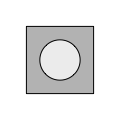One quiz at a time
Re: One quiz at a time
Well, if my old mathematics teacher could know this. I was really bad at mathematics. I always had a kind of gentleman's agreement with her: I'm always present and smiling at her, for this I would get a D
PS: It seems that I'm still bad at mathematics.
PS: It seems that I'm still bad at mathematics.
Last edited by AW77 on 21:49 Thu 24 Oct 2013, edited 2 times in total.
The Eleventh Commandment: Thou shalt know thy Port
Re: One quiz at a time
Not only wrong, but profoundly unsatisfactory. An ugly suggestion. When you have it, you will really know it. When you have it, you will think the puzzle elegant and simple even if it took you ages to get.AW77 wrote:After the new arrangement I still think the pattern is the same.
Now the two forms are:
1st line, 1st from left
5th line, 2nd from left
Ditto.RAYC wrote:I'd go for the two circles in circles (as the only images with no vertices)
No, it is the background, and the same for all of them.RAYC wrote:Does the white "square" (space) constitute part of each image?
Re: One quiz at a time
Not your question. Ignore Daniel.AW77 wrote:Now my question is:
What is my favourite !
Re: One quiz at a time
jdaw1 wrote:There follow twenty small images. Eighteen have something in common. The other two do not have the quality of the eighteen, but do have a different quality, for both of the two this quality being the same but not that of the eighteen. Which two are different, and why?
To prevent information being imagined where there is none, the order of presentation is random.
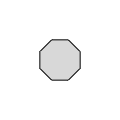
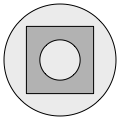
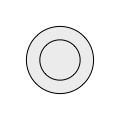
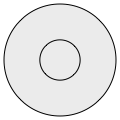
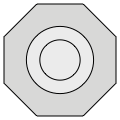
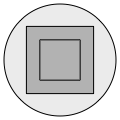
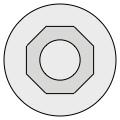
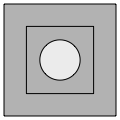
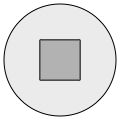
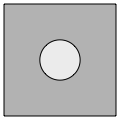
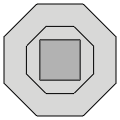
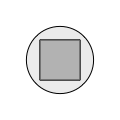
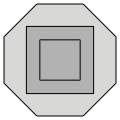
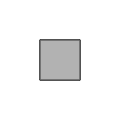
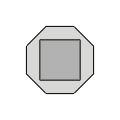
Perhaps those starting a new page could quote this whole post.
Re: One quiz at a time
The betting money has you as the favourite to get this.Glenn E. wrote:However, I doubt that "multiple shapes" and "single shape" are the qualities that Julian is looking for.
Re: One quiz at a time
jdaw1 wrote:There is an easy observation that provides a key.
Re: One quiz at a time
Just to emphasise that there isn’t trickery about minor drawing differences, the puzzle is also available in PDF.
Re: One quiz at a time
Interesting. I would have bet on Daniel. So if true, it is likely only because Phil isn't here.jdaw1 wrote:The betting money has you as the favourite to get this.Glenn E. wrote:However, I doubt that "multiple shapes" and "single shape" are the qualities that Julian is looking for.
So far I'm not finding any satisfactory answers. Lots of common qualities, but none (so far) that leave exactly 2 out.
Glenn Elliott
- djewesbury
- Graham’s 1970
- Posts: 8166
- Joined: 19:01 Mon 31 Dec 2012
- Location: Gothenburg, Sweden
- Contact:
One quiz at a time
This is one of these questions that's about a mental trick, or sleight of hand, of some sort. In some subtle way this is not really about shapes and shading.. This is not a 'spot the difference'.. It's about number.
Last edited by djewesbury on 23:43 Thu 24 Oct 2013, edited 1 time in total.
Daniel J.
Husband of a relentless former Soviet Chess Master.
delete.. delete.. *sigh*.. delete...
Husband of a relentless former Soviet Chess Master.
delete.. delete.. *sigh*.. delete...
Re: One quiz at a time
Still not sure i understand why my answer - or AW77's answer - was "wrong" (as opposed to "correct, but not the differentiating qualities i was looking for")
Rob C.
- djewesbury
- Graham’s 1970
- Posts: 8166
- Joined: 19:01 Mon 31 Dec 2012
- Location: Gothenburg, Sweden
- Contact:
Re: One quiz at a time
It reminds me of this...
..apparently this contains a message but I never worked out what it is.. (and besides, they didn't spell out whole words with signal flags, they used a number code.)

..apparently this contains a message but I never worked out what it is.. (and besides, they didn't spell out whole words with signal flags, they used a number code.)
Daniel J.
Husband of a relentless former Soviet Chess Master.
delete.. delete.. *sigh*.. delete...
Husband of a relentless former Soviet Chess Master.
delete.. delete.. *sigh*.. delete...
- djewesbury
- Graham’s 1970
- Posts: 8166
- Joined: 19:01 Mon 31 Dec 2012
- Location: Gothenburg, Sweden
- Contact:
One quiz at a time
We have been invited to make observations - easy ones at that.
Octagons have twice as many sides as squares; squares have four sides, circles have one.
(I doubt we are counting sides.)
There are at least three different shades used.
Anyone else observe anything?
Octagons have twice as many sides as squares; squares have four sides, circles have one.
(I doubt we are counting sides.)
There are at least three different shades used.
Anyone else observe anything?
Daniel J.
Husband of a relentless former Soviet Chess Master.
delete.. delete.. *sigh*.. delete...
Husband of a relentless former Soviet Chess Master.
delete.. delete.. *sigh*.. delete...
- djewesbury
- Graham’s 1970
- Posts: 8166
- Joined: 19:01 Mon 31 Dec 2012
- Location: Gothenburg, Sweden
- Contact:
One quiz at a time
Is it to do with planes of symmetry?
Daniel J.
Husband of a relentless former Soviet Chess Master.
delete.. delete.. *sigh*.. delete...
Husband of a relentless former Soviet Chess Master.
delete.. delete.. *sigh*.. delete...
Re: One quiz at a time
Circles are light, octagons are medium, squares are dark. Regardless of size.djewesbury wrote:Anyone else observe anything?
No image uses all 3 shapes or shades.
4,3 and 2,4 are the only images that use 2 octagons.
There is only 1 small octagon.
It isn't octal encoding.
Glenn Elliott
-
PhilW
- Dalva Golden White Colheita 1952
- Posts: 3708
- Joined: 13:22 Wed 15 Dec 2010
- Location: Near Cambridge, UK
Re: One quiz at a time
Best guess at the moment: (1,3) and (2,1) are a unique pair in that they have infinite rotational symmetries, while the rest do not.
(however, I have a feeling that the answer being looked for is somewhat more subtle than this)
Observations:
All images contain 1-3 objects.
Each object has one of three shapes (with sides=1,4 or 8) [or one of 4 shapes, if "none"/not present is considered as a valid value].
Each object is always filled with the same colour/shade.
Each object may be one of three sizes (small, medium, large).
There are 20 unique images.
Every image contains a small object.
The only images containing only 1 object (ignoring "none" shape type) contain a small object.
No image contains more than 2 objects of the same shape (and hence colour since shape-to-colour is a 1:1 mapping).
No image contains all three object types.
Images counts for small objects: none=0, circle=10, square=9, octagon=1
Images counts for medium objects: none=5, circle=5, square=5, octagon=5
Images counts for large objects: none=6, circle=6, square=4, octagon=4
btw: good question as long as it has a good answer of course!
as long as it has a good answer of course!
(however, I have a feeling that the answer being looked for is somewhat more subtle than this)
Observations:
All images contain 1-3 objects.
Each object has one of three shapes (with sides=1,4 or 8) [or one of 4 shapes, if "none"/not present is considered as a valid value].
Each object is always filled with the same colour/shade.
Each object may be one of three sizes (small, medium, large).
There are 20 unique images.
Every image contains a small object.
The only images containing only 1 object (ignoring "none" shape type) contain a small object.
No image contains more than 2 objects of the same shape (and hence colour since shape-to-colour is a 1:1 mapping).
No image contains all three object types.
Images counts for small objects: none=0, circle=10, square=9, octagon=1
Images counts for medium objects: none=5, circle=5, square=5, octagon=5
Images counts for large objects: none=6, circle=6, square=4, octagon=4
btw: good question
- djewesbury
- Graham’s 1970
- Posts: 8166
- Joined: 19:01 Mon 31 Dec 2012
- Location: Gothenburg, Sweden
- Contact:
Re: One quiz at a time
(.... clears throat....)
Any clues on observations so far?
Any clues on observations so far?
Daniel J.
Husband of a relentless former Soviet Chess Master.
delete.. delete.. *sigh*.. delete...
Husband of a relentless former Soviet Chess Master.
delete.. delete.. *sigh*.. delete...
Re: One quiz at a time
I think we're going about it the wrong way. We're looking for the two exceptions, when we should be looking for the common rule. The common rule will be the elegant solution, at which point the two exceptions will be obvious.
Glenn Elliott
- djewesbury
- Graham’s 1970
- Posts: 8166
- Joined: 19:01 Mon 31 Dec 2012
- Location: Gothenburg, Sweden
- Contact:
Re: One quiz at a time
Yes, quite. *nods authoritatively*Glenn E. wrote:I think we're going about it the wrong way. We're looking for the two exceptions, when we should be looking for the common rule. The common rule will be the elegant solution, at which point the two exceptions will be obvious.
Daniel J.
Husband of a relentless former Soviet Chess Master.
delete.. delete.. *sigh*.. delete...
Husband of a relentless former Soviet Chess Master.
delete.. delete.. *sigh*.. delete...
Re: One quiz at a time
It has a good answer.PhilW wrote:btw: good questionas long as it has a good answer of course!
PhilW and Glenn E. are almost close.
Re: One quiz at a time
Please comment. Why are the most obvious answers (that fulfil the criteria provided) "wrong"?RAYC wrote:Still not sure i understand why my answer - or AW77's answer - was "wrong" (as opposed to "correct, but not the differentiating qualities i was looking for")
If they are inelegant, that is (in my opinion) the fault of the question (for not excluding their possibility)
Rob C.
Re: One quiz at a time
First, and this is sufficient, because the question master says that they are wrong.RAYC wrote:Please comment. Why are the most obvious answers (that fulfil the criteria provided) "wrong"?
Second, also because there are many possible answers of that sophistication, of that elegance, which are neither more not less plausible. So if that is the required standard of usage of information there might be a technical term using the word ‘entropy’ then almost any answer can be deemed correct.
• ‟Because they are the corner answers on the leading diagonal.”
• ‟Because they are the corner answers on the other diagonal.”
• ‟Because they are the first two answers.”
• ‟Because they are the last two answers.”
• ‟Because they are the middle two answers.”
• ‟Because they are the lightest two answers.”
• ‟Because they are the darkest two answers.”
• ‟Because they are the two answers of middling light absorbance.”
• ‟Because they are the smallest two of the monochrome answers.”
• ‟Because they are the largest two of the monochrome answers.”
Etc, ad irrelevant infinitum.
Whereas the correct answer so elegantly uses the available information that it is self-evidently the, rather than ‟a”, correct answer.
Re: One quiz at a time
Forgive me if i am being dim, but all of these would have been excluded by your intial instructions (whereby order is not important)?jdaw1 wrote:Second, also because there are many possible answers of that sophistication, of that elegance, which are neither more not less plausible. So if that is the required standard of usage of information there might be a technical term using the word ‘entropy’ then almost any answer can be deemed correct.
• ‟Because they are the corner answers on the leading diagonal.”
• ‟Because they are the corner answers on the other diagonal.”
• ‟Because they are the first two answers.”
• ‟Because they are the last two answers.”
• ‟Because they are the middle two answers.”
These do not, in the same way as the answers previously suggested, explain two qualities or characteristics that set 18 symbols apart (on the one hand) from the other two. They are a qualitatively different type of answer - i would go as far as adopting the favoured guardian reposte of "stawman argument"jdaw1 wrote:‟Because they are the lightest two answers.”
• ‟Because they are the darkest two answers.”
• ‟Because they are the two answers of middling light absorbance.”
• ‟Because they are the smallest two of the monochrome answers.”
• ‟Because they are the largest two of the monochrome answers.”
Rob C.
- djewesbury
- Graham’s 1970
- Posts: 8166
- Joined: 19:01 Mon 31 Dec 2012
- Location: Gothenburg, Sweden
- Contact:
Re: One quiz at a time
In the red corner.... 
Daniel J.
Husband of a relentless former Soviet Chess Master.
delete.. delete.. *sigh*.. delete...
Husband of a relentless former Soviet Chess Master.
delete.. delete.. *sigh*.. delete...
Re: One quiz at a time
Actually, I see these answers as very similar to the two that Julian ruled insufficiently elegant. These all identify the 2 without providing an elegant similarity for the 18. "Each image contains multiple shapes" is an inelegant grouping. It is true, except for the 2, but it isn't an answer worthy of a puzzle.RAYC wrote:These do not, in the same way as the answers previously suggested, explain two qualities or characteristics that set 18 symbols apart (on the one hand) from the other two. They are a qualitatively different type of answer - i would go as far as adopting the favoured guardian reposte of "stawman argument"jdaw1 wrote:‟Because they are the lightest two answers.”
• ‟Because they are the darkest two answers.”
• ‟Because they are the two answers of middling light absorbance.”
• ‟Because they are the smallest two of the monochrome answers.”
• ‟Because they are the largest two of the monochrome answers.”
We have yet to identify the common quality that the 18 share. We keep saying "these 2 are different in this way" without really saying "these 18 are similar in this other way," other than to reverse the first.
I also believe that the quality that the 2 share is different than the quality that the 18 share. Not just the opposite of the quality that the 18 share, but actually a different quality.
Glenn Elliott
Re: One quiz at a time
AW77 wrote:both forms do only have one line and simply white space around them
Are there other answers equally plausible?RAYC wrote:the two circles in circles (as the only images with no vertices)
So octagons must be special (as indeed they are, a bit, but not as special as all that), in which case the two with maximum number of octagons (for there are only two).PhilW wrote:Images counts for small objects: none=0, circle=10, square=9, octagon=1
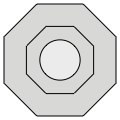

Or, different reasoning leading to the same answer, there are two with two octagons. Interesting. But there are four with two squares:


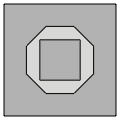

And there are seven with two circles


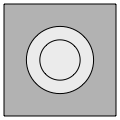



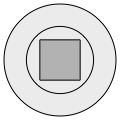
So, given that the answer has two oddities, it can only be the octagon majority:


(But this is unsatisfactory: the oddities are only the oddities in the context of this question, rather than a more absolute oddness.)
Or the largest two using only shape? (That is, the only two comprising more than one shape, all used shapes being equal.)


And maybe I can concoct other equally plausible non-answers. No. The correct answer, when understood, will very clearly be the correct answer, and there can be no other.
Re: One quiz at a time
jdaw1 wrote:There follow twenty small images. Eighteen have something in common. The other two do not have the quality of the eighteen, but do have a different quality, for both of the two this quality being the same but not that of the eighteen. Which two are different, and why?
To prevent information being imagined where there is none, the order of presentation is random.















Perhaps those starting a new page could quote this whole post.
- djewesbury
- Graham’s 1970
- Posts: 8166
- Joined: 19:01 Mon 31 Dec 2012
- Location: Gothenburg, Sweden
- Contact:
Re: One quiz at a time
From what Julian has already said, I think that Glenn is absolutely correct here. But, as much as I've been staring at this puzzle for the last two days, I can't get beyond numbers of sides, or numbers of vertices, or some sort of abstruse and inelegant combination such as [shade + vertices]. And I feel very strongly that these are all wrong. Which is why I thought it was about symmetry. Then I thought they were all some kind of section of polygonal shapes, but that led me nowhere. Then I tried considering negative space. Then I got a migraine.
Daniel J.
Husband of a relentless former Soviet Chess Master.
delete.. delete.. *sigh*.. delete...
Husband of a relentless former Soviet Chess Master.
delete.. delete.. *sigh*.. delete...
Re: One quiz at a time
All wrong, most especially the migraine (and excepting the ‟I feel very strongly that these are all wrong”). Something very close to the correct understanding has been mentioned, but not by you.djewesbury wrote:From what Julian has already said, I think that Glenn is absolutely correct here. But, as much as I've been staring at this puzzle for the last two days, I can't get beyond numbers of sides, or numbers of vertices, or some sort of abstruse and inelegant combination such as [shade + vertices]. And I feel very strongly that these are all wrong. Which is why I thought it was about symmetry. Then I thought they were all some kind of section of polygonal shapes, but that led me nowhere. Then I tried considering negative space. Then I got a migraine.
- djewesbury
- Graham’s 1970
- Posts: 8166
- Joined: 19:01 Mon 31 Dec 2012
- Location: Gothenburg, Sweden
- Contact:
Re: One quiz at a time
Is this significant..?PhilW wrote: No image contains all three object types.
Daniel J.
Husband of a relentless former Soviet Chess Master.
delete.. delete.. *sigh*.. delete...
Husband of a relentless former Soviet Chess Master.
delete.. delete.. *sigh*.. delete...
- djewesbury
- Graham’s 1970
- Posts: 8166
- Joined: 19:01 Mon 31 Dec 2012
- Location: Gothenburg, Sweden
- Contact:
Re: One quiz at a time
Oh I know, two of them are vowels.
Daniel J.
Husband of a relentless former Soviet Chess Master.
delete.. delete.. *sigh*.. delete...
Husband of a relentless former Soviet Chess Master.
delete.. delete.. *sigh*.. delete...
- djewesbury
- Graham’s 1970
- Posts: 8166
- Joined: 19:01 Mon 31 Dec 2012
- Location: Gothenburg, Sweden
- Contact:
Re: One quiz at a time
I think a clue would be fair.
Daniel J.
Husband of a relentless former Soviet Chess Master.
delete.. delete.. *sigh*.. delete...
Husband of a relentless former Soviet Chess Master.
delete.. delete.. *sigh*.. delete...
Re: One quiz at a time
I could have made the puzzle bigger, including all the appropriate drawings with ≤4 shapes, most of the included drawings sharing the quality of the eighteen, but a few sharing the quality of the two. If I had done so, twelve would have contained all three shapes.
Which won’t help you.
Which won’t help you.
- djewesbury
- Graham’s 1970
- Posts: 8166
- Joined: 19:01 Mon 31 Dec 2012
- Location: Gothenburg, Sweden
- Contact:
Re: One quiz at a time
... Glenn..?
Daniel J.
Husband of a relentless former Soviet Chess Master.
delete.. delete.. *sigh*.. delete...
Husband of a relentless former Soviet Chess Master.
delete.. delete.. *sigh*.. delete...
Re: One quiz at a time
djewesbury wrote:I think a clue would be fair.
These puzzles are never about the answer. They are about the understanding, from which the answer generally follows trivially. It is like happiness. If you seek happiness, you will fail. If you seek understanding, you will find happiness.jdaw1 wrote:Something very close to the correct understanding has been mentioned, but not by you.
- djewesbury
- Graham’s 1970
- Posts: 8166
- Joined: 19:01 Mon 31 Dec 2012
- Location: Gothenburg, Sweden
- Contact:
Re: One quiz at a time
I have to go and lie down...jdaw1 wrote:If you seek happiness, you will fail. If you seek understanding, you will find happiness.
EDIT: I am only seeking understanding. I only ever seek understanding. I am kneeling and beseeching these picture to give me understanding. But I am not understanding.
Daniel J.
Husband of a relentless former Soviet Chess Master.
delete.. delete.. *sigh*.. delete...
Husband of a relentless former Soviet Chess Master.
delete.. delete.. *sigh*.. delete...
Re: One quiz at a time
This explains why these two are unique, but not what the other 18 have in common. Contrast with the example of the two circles in circles: the quality unique to the 18 is that of vertices. The quality unique to the other 2 is - in the words of Phil - infinite rotational symmetry. Your posited examples do not display this duality - only a one-sided "uniqueness"jdaw1 wrote:AW77 wrote:both forms do only have one line and simply white space around themAre there other answers equally plausible?RAYC wrote:the two circles in circles (as the only images with no vertices)
So octagons must be special (as indeed they are, a bit, but not as special as all that), in which case the two with maximum number of octagons (for there are only two).PhilW wrote:Images counts for small objects: none=0, circle=10, square=9, octagon=1

Last edited by RAYC on 21:08 Fri 25 Oct 2013, edited 1 time in total.
Rob C.
Re: One quiz at a time
There is an answer that, when found, is elegant and self-evidently correct. If that isn’t enough for you, then instead accept the prerogative of the question master.
Re: One quiz at a time
I remain of the opinion - not yet countered - that it is a flawed question if the self-evident answers which fulfil the criteria of the question are "wrong"jdaw1 wrote:There is an answer that, when found, is elegant and self-evidently correct. If that isn’t enough for you, then instead accept the prerogative of the question master.
Rob C.
Re: One quiz at a time
Sorry, a ‟one” went missing. I meant ‟Or the largest two using only one shape?”.jdaw1 wrote:Or the largest two using only shape? (That is, the only two comprising more than one shape, all used shapes being equal.)

Re: One quiz at a time
When the answer is found, that will be known to the finder. The finder could post a complete explanation. Or the finder could post the answer the two images and a cryptic hint, demonstrating to me that this wasn’t a wild guess, but explaining nothing to anybody else. (There is a nice wording that would do just that.) Obviously the latter would allow the non-finders who really ought to get it a little more time to understand. Finder’s prerogative. (Though an explanation would have to follow eventually.)djewesbury wrote:I am only seeking understanding.
- djewesbury
- Graham’s 1970
- Posts: 8166
- Joined: 19:01 Mon 31 Dec 2012
- Location: Gothenburg, Sweden
- Contact:
Re: One quiz at a time
Should we revisit this?jdaw1 wrote:There is an easy observation that provides a key.
Daniel J.
Husband of a relentless former Soviet Chess Master.
delete.. delete.. *sigh*.. delete...
Husband of a relentless former Soviet Chess Master.
delete.. delete.. *sigh*.. delete...
Re: One quiz at a time
That's what I've been trying to do, but I'm apparently not very observant.djewesbury wrote:Should we revisit this?jdaw1 wrote:There is an easy observation that provides a key.
Glenn Elliott
- djewesbury
- Graham’s 1970
- Posts: 8166
- Joined: 19:01 Mon 31 Dec 2012
- Location: Gothenburg, Sweden
- Contact:
Re: One quiz at a time
Here's an observation. I've been trying to find the link between the 18 pictures that have a link; and the problem is that nos. 1 & 18 are very difficult to connect to the others. And yet they are NOT the two that have something in common with each other and not the other 18. This is a paradox.Glenn E. wrote:That's what I've been trying to do, but I'm apparently not very observant.djewesbury wrote:Should we revisit this?jdaw1 wrote:There is an easy observation that provides a key.
Daniel J.
Husband of a relentless former Soviet Chess Master.
delete.. delete.. *sigh*.. delete...
Husband of a relentless former Soviet Chess Master.
delete.. delete.. *sigh*.. delete...
- djewesbury
- Graham’s 1970
- Posts: 8166
- Joined: 19:01 Mon 31 Dec 2012
- Location: Gothenburg, Sweden
- Contact:
One quiz at a time
Observation.
The number of shapes depicted in each picture is equal to the number of colours / shades used.
(This is not the same, quite as Phil's observation earlier.)
Please point out that this is irrelevant.
The number of shapes depicted in each picture is equal to the number of colours / shades used.
(This is not the same, quite as Phil's observation earlier.)
Please point out that this is irrelevant.
Daniel J.
Husband of a relentless former Soviet Chess Master.
delete.. delete.. *sigh*.. delete...
Husband of a relentless former Soviet Chess Master.
delete.. delete.. *sigh*.. delete...
Re: One quiz at a time
I think it is the same as Phil’s observation. Certainly all circles have the same pale grey, all octagons the same medium grey, and squares the same dark(est) grey. It is of marginal relevance: it shows that it suffices to consider shapes, or greys, according to one’s taste, but having considered one there’s no additional information in considering the other.djewesbury wrote:Observation.
The number of shapes depicted in each picture is equal to the number of colours / shades used.
(This is not the same, quite as Phil's observation earlier.)
Please point out that this is irrelevant.
Re: One quiz at a time
Clue:
jdaw1 wrote:There is an easy observation that provides a key.
PhilW wrote:Images counts for small objects: none=0, circle=10, square=9, octagon=1
If the puzzle had been extended, however far, every innermost shape would be a circle or a square (excepting the one solo octagon already shown).jdaw1 wrote:I could have made the puzzle bigger, including all the appropriate drawings with ≤4 shapes, most of the included drawings sharing the quality of the eighteen, but a few sharing the quality of the two. If I had done so, twelve would have contained all three shapes.
- djewesbury
- Graham’s 1970
- Posts: 8166
- Joined: 19:01 Mon 31 Dec 2012
- Location: Gothenburg, Sweden
- Contact:
Re: One quiz at a time
Is this a notation of a counting system? Glenn dismissed octal; is there some other base that would give a key?
Daniel J.
Husband of a relentless former Soviet Chess Master.
delete.. delete.. *sigh*.. delete...
Husband of a relentless former Soviet Chess Master.
delete.. delete.. *sigh*.. delete...
- djewesbury
- Graham’s 1970
- Posts: 8166
- Joined: 19:01 Mon 31 Dec 2012
- Location: Gothenburg, Sweden
- Contact:
One quiz at a time
Does [octagon] = 0? Is this somehow a representation of base 2?
Daniel J.
Husband of a relentless former Soviet Chess Master.
delete.. delete.. *sigh*.. delete...
Husband of a relentless former Soviet Chess Master.
delete.. delete.. *sigh*.. delete...
Re: One quiz at a time
You are within reach. So nearly there.
Re: One quiz at a time
jdaw1 wrote:There follow twenty small images. Eighteen have something in common. The other two do not have the quality of the eighteen, but do have a different quality, for both of the two this quality being the same but not that of the eighteen. Which two are different, and why?
To prevent information being imagined where there is none, the order of presentation is random.















Perhaps those starting a new page could quote this whole post.
